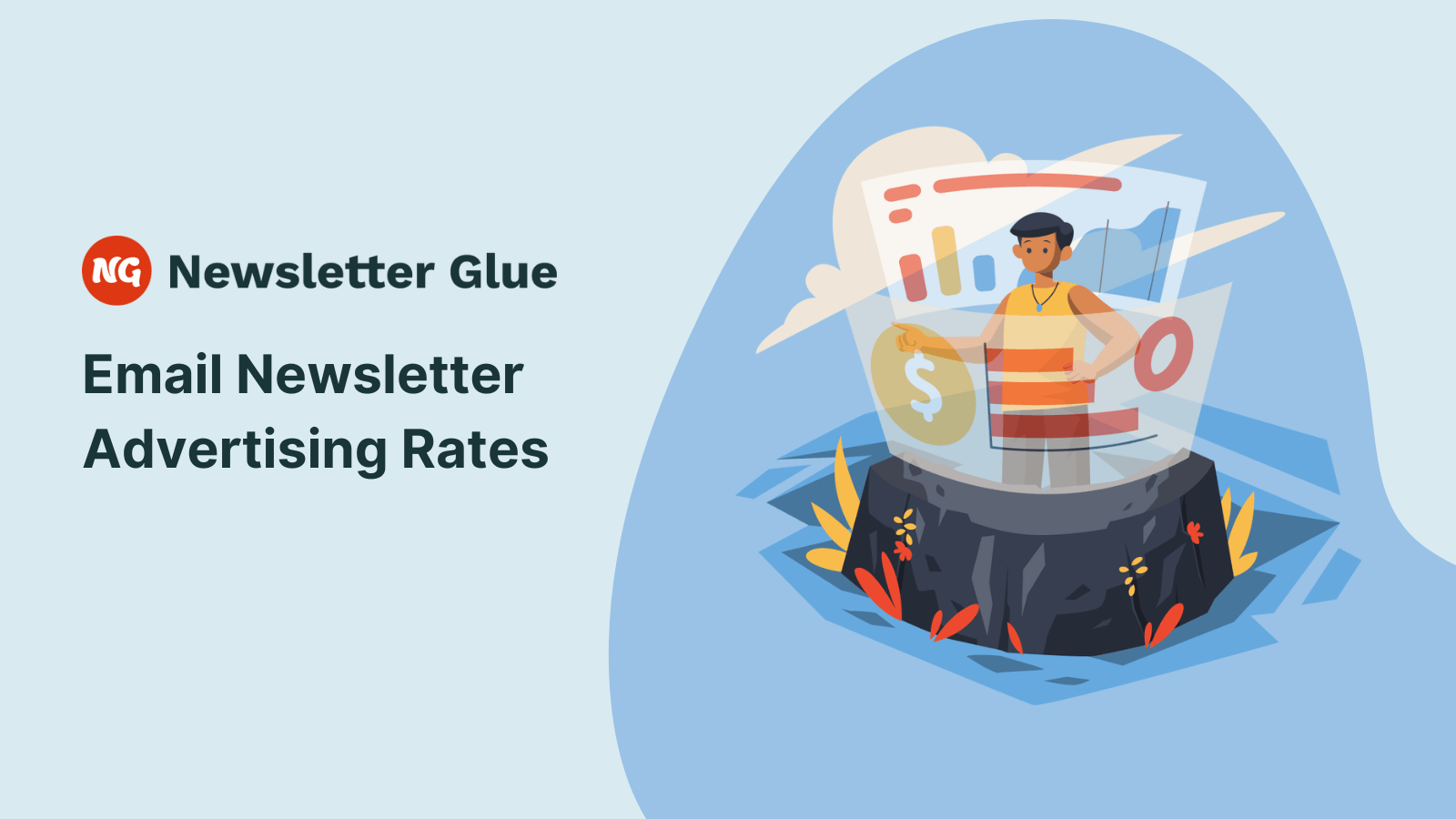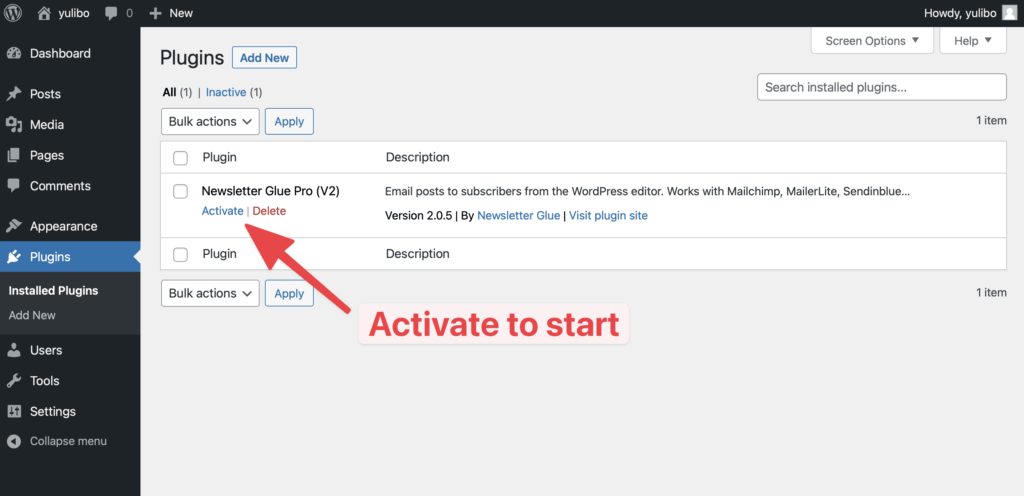Are you planning on adding advertising in your newsletters?
Advertising space in email newsletters is gaining traction – especially as email marketing remains a potent channel for communication and conversions. Many publishers are recognising the untapped potential of leveraging their newsletters for advertising purposes.
In this article, we’ll guide you in the right direction for attracting high-paying advertisers for your newsletter. We’ll explore the key considerations to keep in mind – such as pricing models, niches, engagement metrics, and strategies to maximise the effectiveness of advertisements.
Factors that determine email newsletter advertising rates
It’s important to consider the different factors that can influence the value of your advertising space. Understanding these factors is essential to maximise your revenue potential.
Here are the key elements that play a significant role in determining email newsletter advertising rates:
Newsletter subscribers
The size of your newsletter subscriber base is a fundamental factor in deciding advertising rates. Generally, the larger the subscriber base, the higher the advertising rates can be. Advertisers seek exposure to a wider audience, and publishers with a substantial database offer greater reach and visibility. If you’ve built a sizable and engaged subscriber base, you can command higher rates. This is due to the potential for increased brand exposure and conversions.
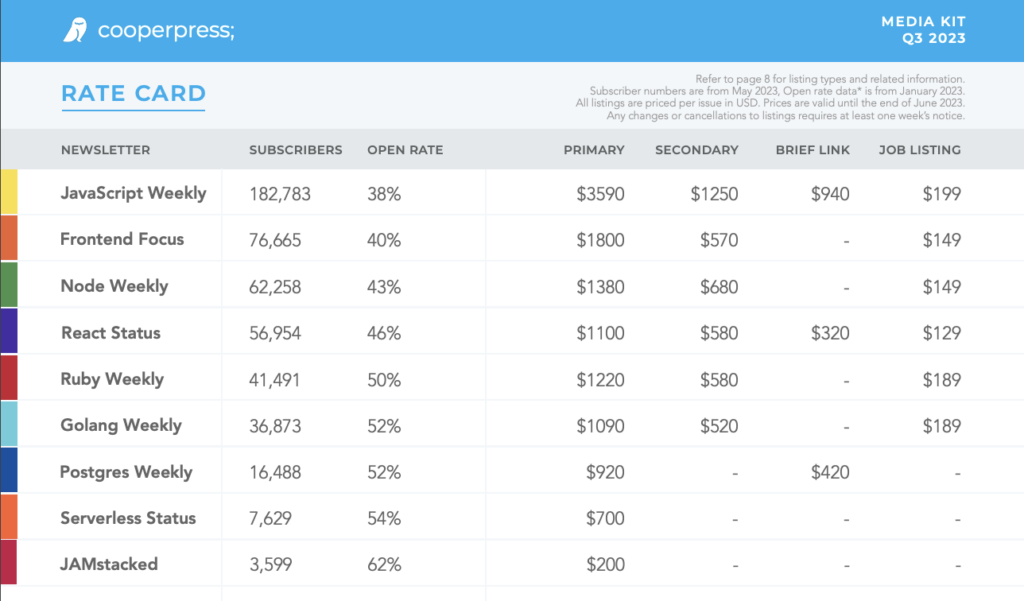
Niche
The specific industry or niche that your newsletter caters to also influences advertising rates. Newsletters targeting niche markets, with specialised audiences, often attract advertisers looking to reach a specific audience. If you operate in high-demand industries or niche markets, competition for advertising space is a little more intense, and you may be able to charge more premium advertising rates.
Open and CTR rate
The open rate and click-through rate (CTR) of a newsletter are crucial metrics as they help to indicate the impact a newsletter has. Higher open rates and CTRs also demonstrate a more engaged and active audience, making advertising space more attractive to potential advertisers. Advertisers are willing to pay a premium to reach an audience that consistently interacts with the content and demonstrates a passion for engaging with their ads.
Audience demographic
Your newsletter’s demographic profile plays a significant role in determining advertising rates. Factors such as location, age, gender, income level, and interests of the subscribers can impact the perceived value of the advertising space. Advertisers often target specific demographics to align their products or services with the interests of a particular audience. A well-defined and desirable demographic profile can often command higher rates, as the audience offers increased value.
Reader’s profile
Understanding the profile of the newsletter readers, including their job roles, hobbies, purchasing habits, and preferences, is crucial for calculating advertising rates. If you can provide detailed insights into your readers’ profiles, this offers advertisers the opportunity to tailor their messaging and promotions more effectively. Again, advertisers are often willing to pay a premium for access to a highly relevant audience that aligns with their target market.
Here’s an example of newsletter stats you might want to display to potential advertisers.
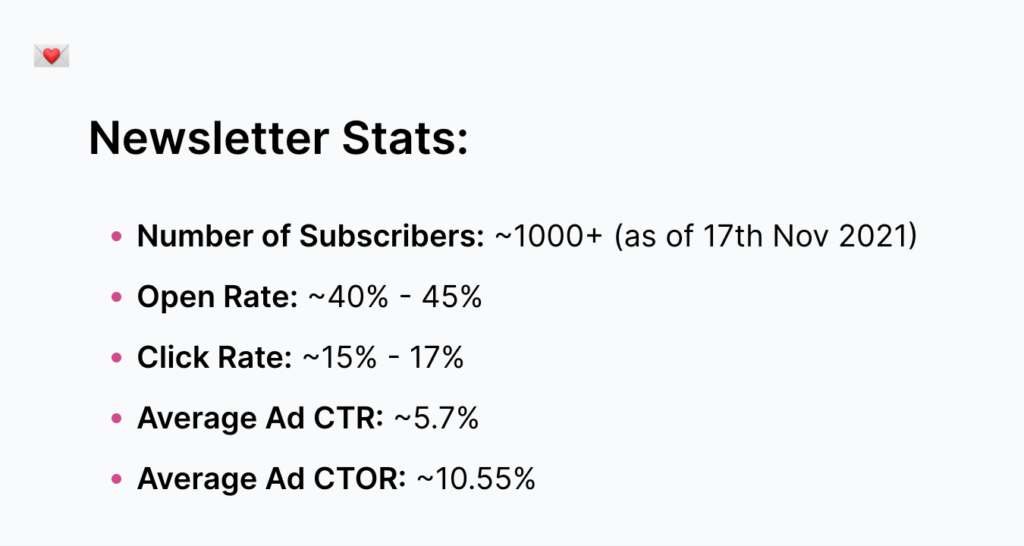
Average email newsletter advertising rates across different niches
Advertising rates can vary significantly depending on the niche or industry that you as a publisher operates in. Understanding the average advertising rates within specific niches is crucial for both your business and advertisers to gauge the market value – and make informed decisions.
Let’s take three niche examples:
Business
Business newsletters cater to a professional audience, offering valuable insights, industry updates, and relevant content related to various sectors.
CPM (cost per mille) is a commonly used pricing model for newsletter advertising, where advertisers pay for every thousand impressions their ad receives.
The average CPM for business newsletters typically ranges from £25 to £80, depending on the newsletter’s reach, quality of subscribers, and engagement rates. Newsletters with larger subscriber bases and higher engagement metrics tend to command higher CPM rates.
In the CPC (cost per click) pricing model, advertisers pay for each click their ad receives. Business newsletters typically have CPC rates ranging from £1 to £4 per click. Rates depend on the audience’s demographic, engagement levels, and the competitiveness of the industry.

The last pricing model is CPA (Cost per acquisition). This is performance-based, and advertisers pay a commission or a fixed amount for every conversion generated through the newsletter ad. Business newsletters may charge CPA rates ranging from 5% to 20% of the total value of the conversion or acquisition. Rates depend on the quality of the audience, the complexity of the desired action, and the potential value of the conversions.
Technology
Catering to a highly specialised audience, technology newsletters are for subscribers interested in the latest trends, innovations, and developments in the tech industry.
The average CPM for technology newsletters typically ranges from £45 to £120. The specific rates within this range are determined by the size and quality of the subscriber base, the level of engagement, and the niche specialisation. Technology newsletters targeting a highly sought-after niche or with a large, engaged audience may command higher CPM rates.
Here’s an example of a tech rate card from TLDR:
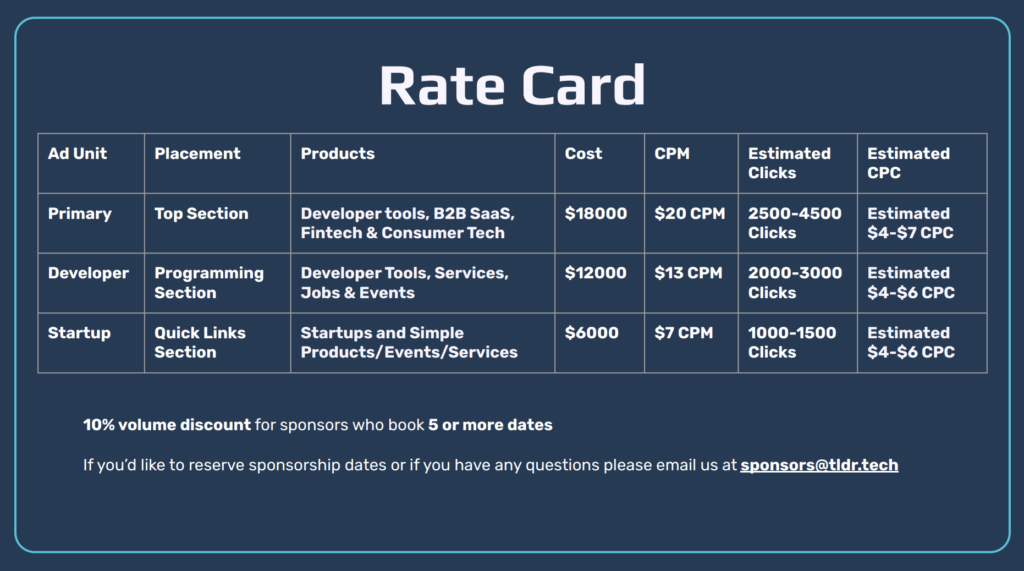
CPC rates tend to range from £1 to £6 per click for technology newsletter advertising space. Technology newsletters may charge CPA rates ranging from 8% to 25% of the total value of the acquisition. The decision is based on the audience’s purchasing power, the complexity of the desired action (such as software purchases or subscription sign-ups), and the potential lifetime value of the customers acquired.
Lifestyle
Lifestyle newsletters cater to an audience interested in various aspects of personal well-being, including health, fitness, fashion, beauty, travel, and more.
Advertising rates for lifestyle newsletters can vary based on factors such as the niche specialisation within the lifestyle industry, and the demographics of the audience. Although rates can vary, average advertising rates for lifestyle newsletters can range from £15 to £65.
Lifestyle newsletters targeting specific niches with a highly engaged audience, such as luxury travel or organic food, often come with higher CPM rates.
The average CPC rates for lifestyle newsletters generally range from £0.40 to £2 per click. Lifestyle newsletters may charge CPA rates ranging from 5% to 15% of the total value of the acquisition. Again, this can be influenced by factors such as the audience’s purchasing power, the complexity of the desired action (such as subscription sign-ups or product purchases), and the potential lifetime value of the customers acquired.
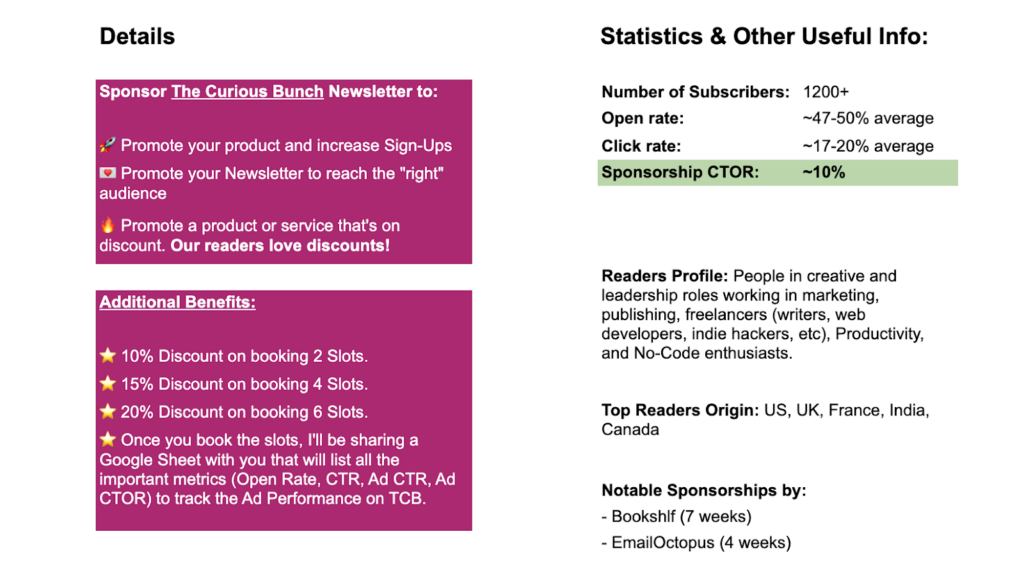
What are the different ad formats and their rates
Now that we’re familiar with different niches and their costs, let’s take a look at the different types of ad formats available. There are typically two:
Custom display ads
Custom display ads are visually appealing and highly customised advertisements that are designed to fit seamlessly within the layout and design of a newsletter. Advertisers might display various sizes with different costs.
These ads typically include engaging visuals, interactive elements, and compelling calls to action. Custom display ads allow advertisers to have greater creative control over their messaging and design, such as incorporating specific brand elements like logos and colours. This can make them stand out to the audience and potentially increase engagement and conversions.
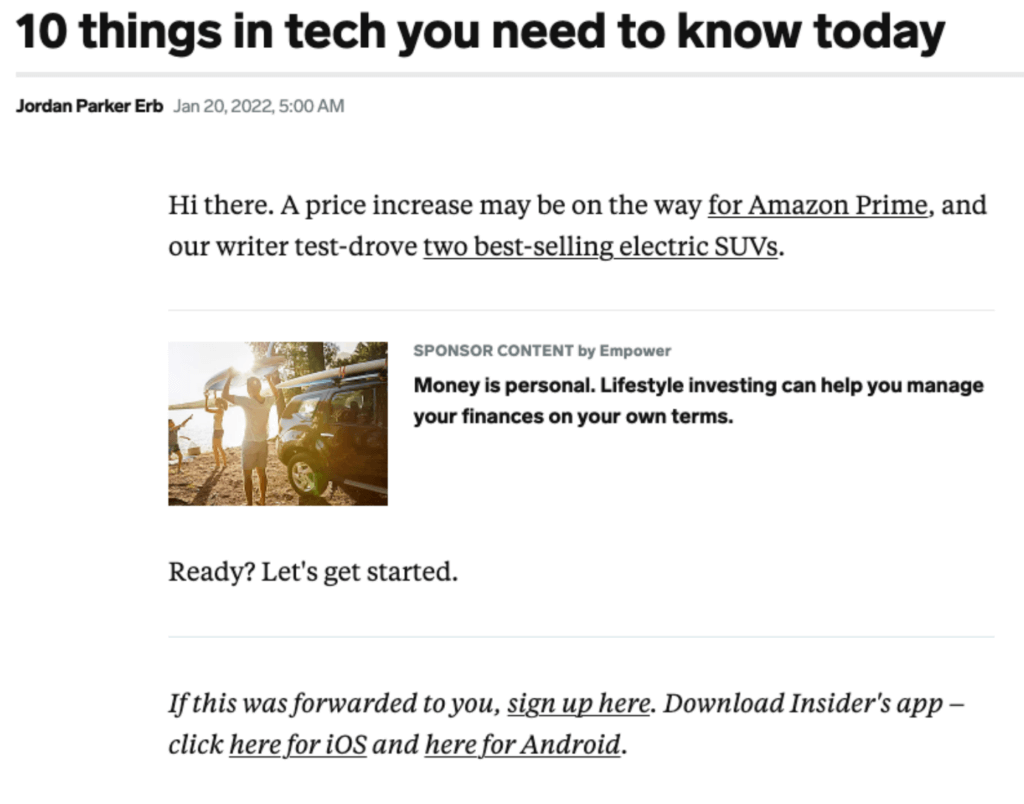
Native ads
Native ads are designed to blend seamlessly into the surrounding content, providing a non-disruptive and native user experience.
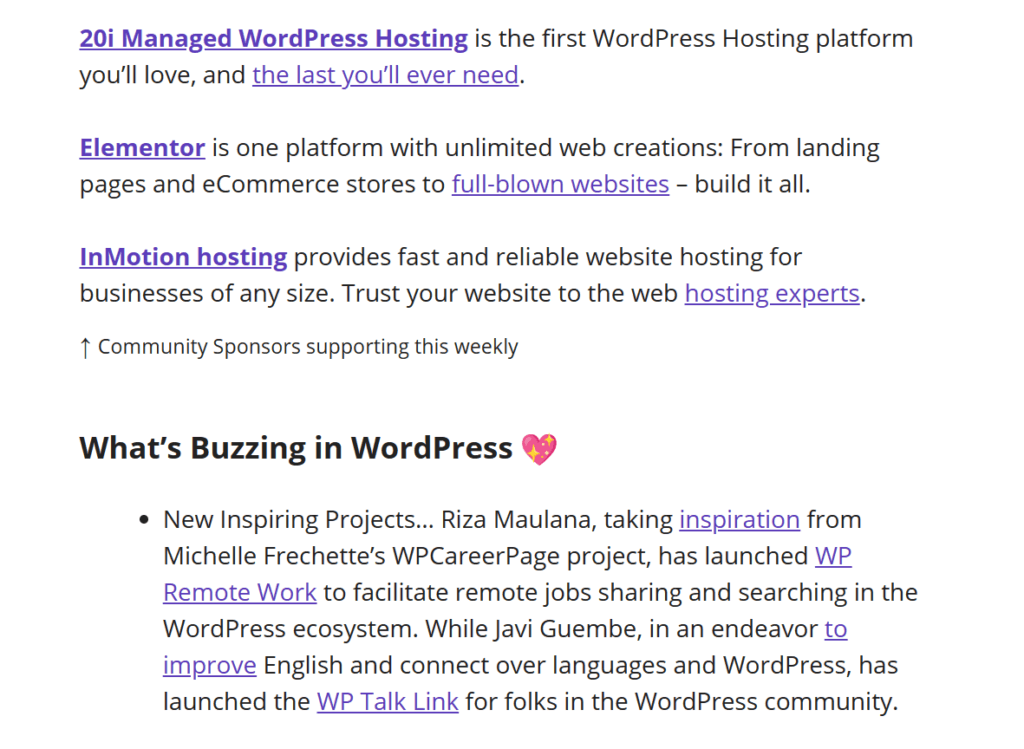
These ads mimic the style and format of a website or newsletter, making them appear as natural content rather than obvious advertisements. Native ads are often labelled as “sponsored” or “promoted” to maintain transparency for the audience. By matching the appearance and style of the content, native ads can generate higher user engagement and click-through rates.
As a publisher, you’ll need to decide which format would best suit your advertisers and subscribers.
Next steps: Automate your email newsletter advertising booking
When you’re planning to monetize your newsletters through advertising, efficiently managing the ads is crucial.
By implementing automated booking, tracking, and reporting features, you can streamline the entire process, save time, and enhance revenue generation.
For example, if you automate the process of booking, you’ll spend significantly less time going back and forth with advertisers. Swapstack can help you to provide a seamless online booking system that simplifies advertisers’ ad placement process. Not only by improving the experience but also by encouraging repeat business.

